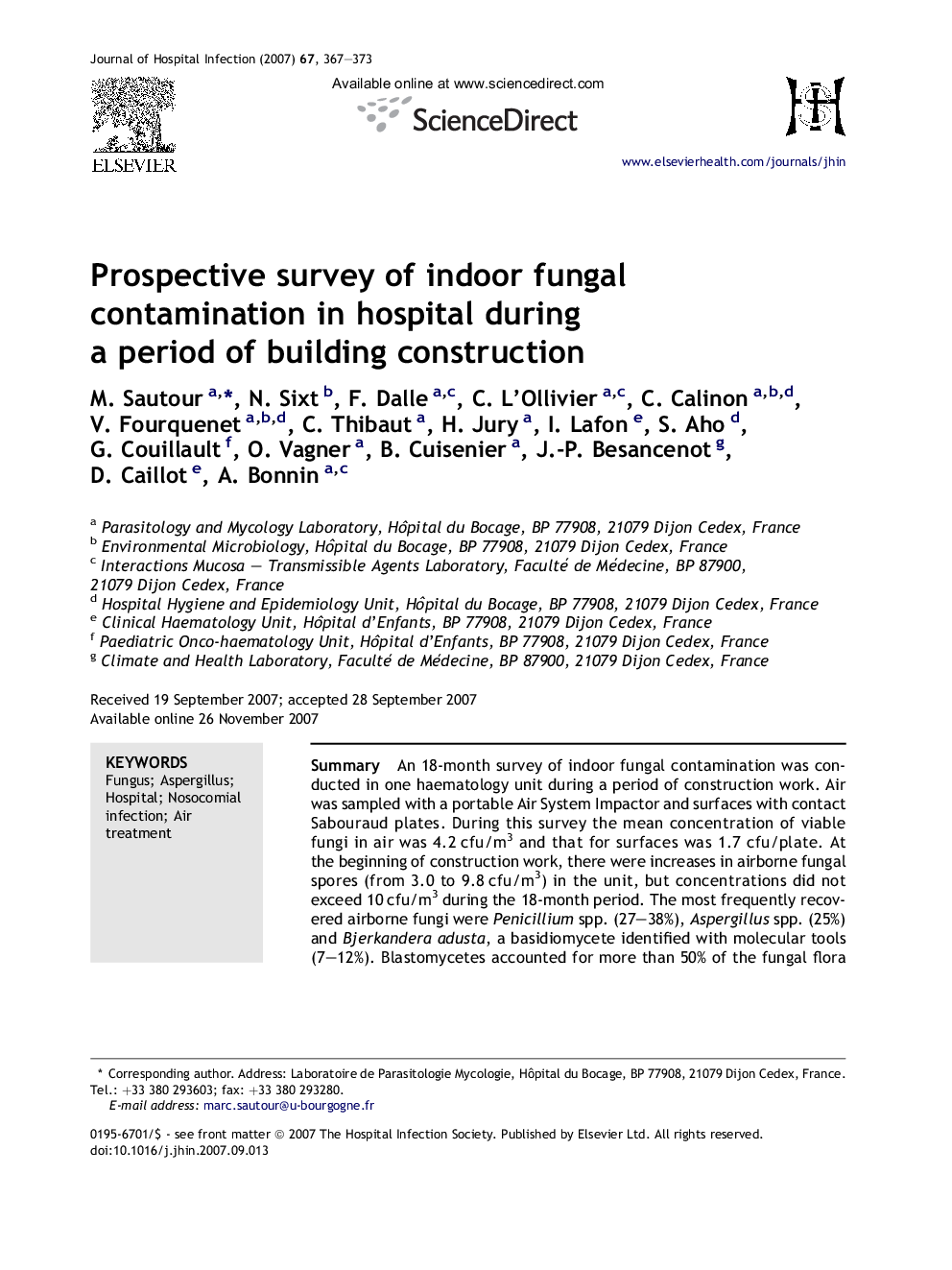| Article ID | Journal | Published Year | Pages | File Type |
|---|---|---|---|---|
| 3373446 | Journal of Hospital Infection | 2007 | 7 Pages |
SummaryAn 18-month survey of indoor fungal contamination was conducted in one haematology unit during a period of construction work. Air was sampled with a portable Air System Impactor and surfaces with contact Sabouraud plates. During this survey the mean concentration of viable fungi in air was 4.2 cfu/m3 and that for surfaces was 1.7 cfu/plate. At the beginning of construction work, there were increases in airborne fungal spores (from 3.0 to 9.8 cfu/m3) in the unit, but concentrations did not exceed 10 cfu/m3 during the 18-month period. The most frequently recovered airborne fungi were Penicillium spp. (27–38%), Aspergillus spp. (25%) and Bjerkandera adusta, a basidiomycete identified with molecular tools (7–12%). Blastomycetes accounted for more than 50% of the fungal flora on surfaces. Investigating the impact of a new air-treatment system (mobile Plasmair™ units), there were significant reductions in fungal contamination for the Plasmer™-treated rooms, and in these rooms we observed the same level of fungal load whether construction work was in progress or not.
